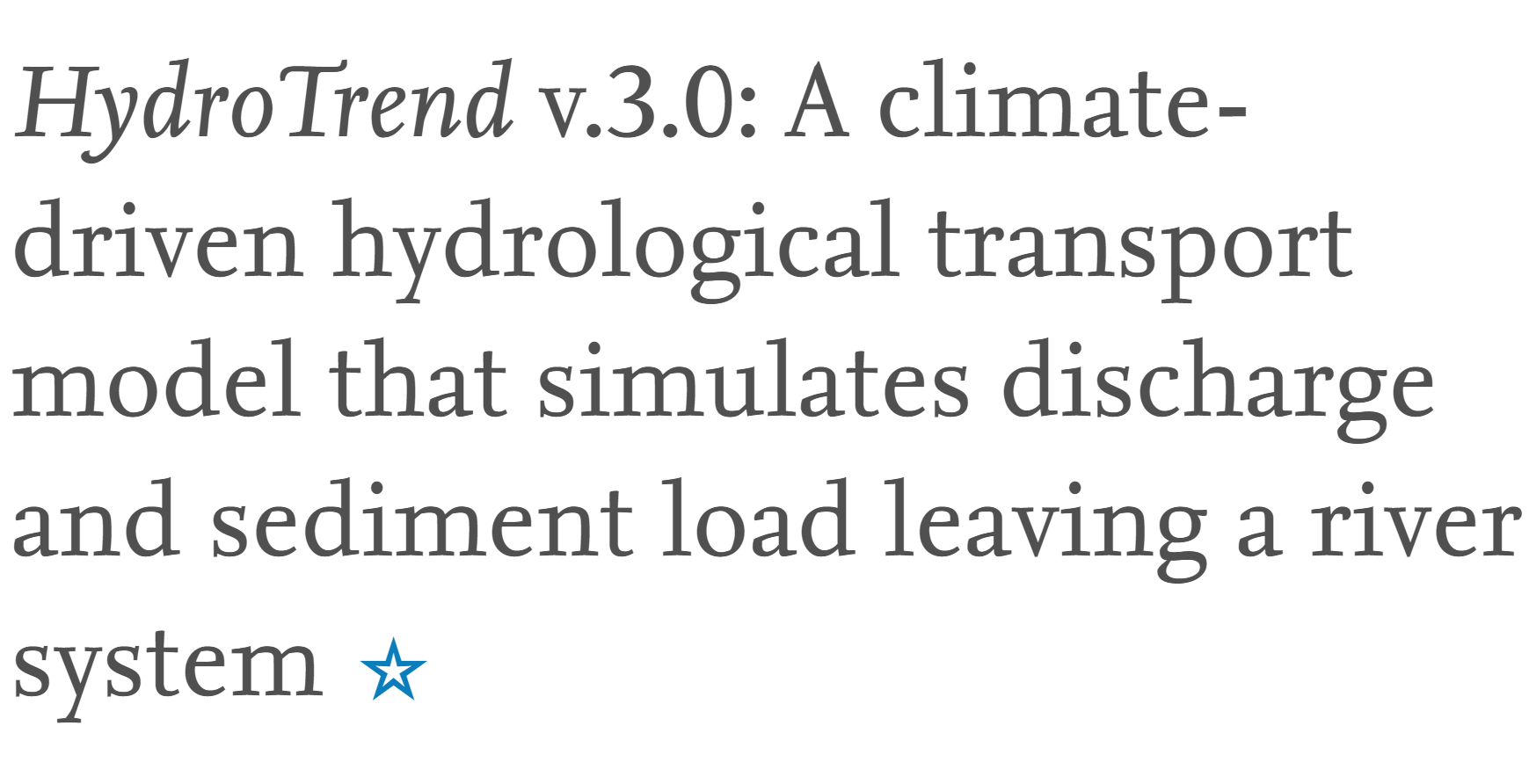Quoted from: Kettner, Albert J., and James PM Syvitski. "HydroTrend v. 3.0: A climate-driven hydrological transport model that simulates discharge and sediment load leaving a river system." Computers & Geosciences 34, no. 10 (2008): 1170-1183. https://doi.org/10.1016/j.cageo.2008.02.008
Fluvial sediment supply directly influences coastal dynamics (Coltorti, 1997; Liquete et al., 2004; Ly, 1980; Summerhayes et al., 1978) and human habitats (Syvitski et al., 2005c). However, only 10–15 % of the world's rivers have been monitored for their supply of sediment to the coast, and most of these rivers are no longer gauged (Syvitski et al., 2003). At longer time scales fluvial sediment supply is a dominant determinant of the stratigraphic architecture of basin fills, whereas the formation of storm beds is particularly important in defining reservoir properties (Fan et al., 2004).
Because of scarcity of river sediment load observations, we present a significant upgrade to the model HydroTrend (Syvitski and Alcott, 1995; Syvitski et al., 1998). HydroTrend is a climate-driven hydrological transport model used to generate synthetic water discharge and sediment load records of multiple grain sizes at a river's outlet, for time scales varying from 101 to −105 y. The model aims to reflect realistic water and sediment fluxes by capturing complex natural processes in relatively easy to obtain parameters. Model output is provided in such a way that it can directly be used as input for SedFlux (Hutton and Syvitski, this issue; Syvitski and Hutton, 2001), a basin fill simulation program. Key improvements to HydroTrend v.3.0 include:
- 1.
-
New suspended sediment algorithms (Morehead et al., 2003; Syvitski and Milliman, 2007; Syvitski et al., 2003) to predict the long-term suspended sediment load and the instantaneous load of a river.
- 2.
-
An improved routine to simulate the sediment delivery fluctuations from ice storage and release, based on changes in ice volume (Kettner and Syvitski, in press).
- 3.
-
A sediment trapping routine to account for lakes or reservoirs in a river basin (Kettner and Syvitski, in press).
- 4.
-
A new distributary channel routine to simulate the effect of sediment load entering the ocean through multiple outlets (Syvitski et al., 2005a).
- 5.
-
The use of sequential climate observations as an alternative to the statistical generation of climate data from observed statistical variability, for more direct model comparison to observations (Syvitski et al., 2005b).
As climate and geomorphology data are available online, HydroTrend v.3.0 provides general use for the simulation of water and sediment discharge of the world's ungauged rivers. An Internet web site for the model provides the possibility to upload input data and to run the model remotely. An email response alerts users when the simulation is completed. The website1 contains background information, example files and MATLAB routines to analyze and visualize the generated discharge and sediment load data.








